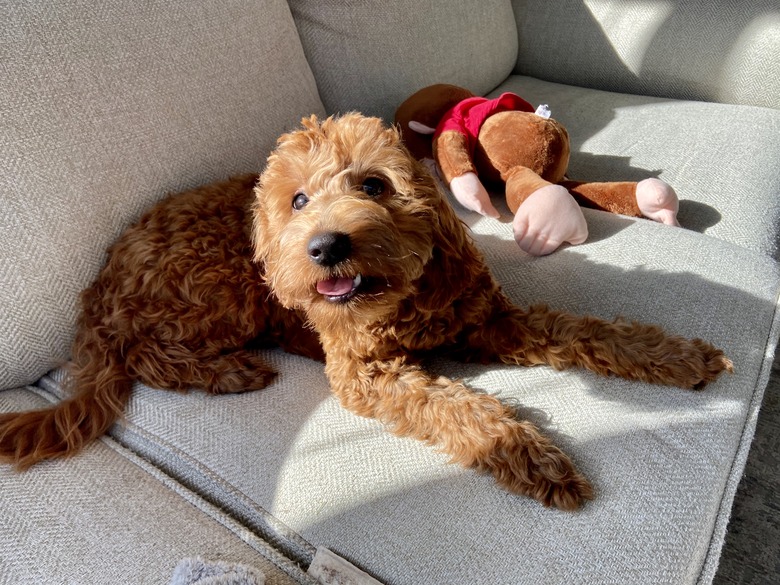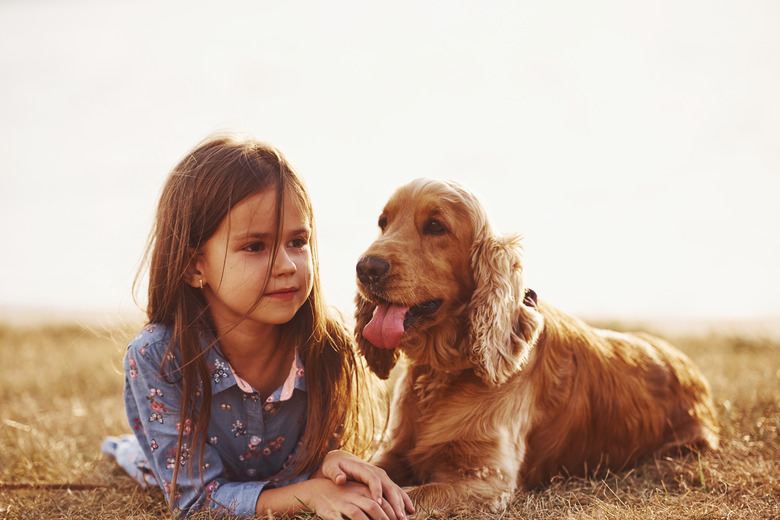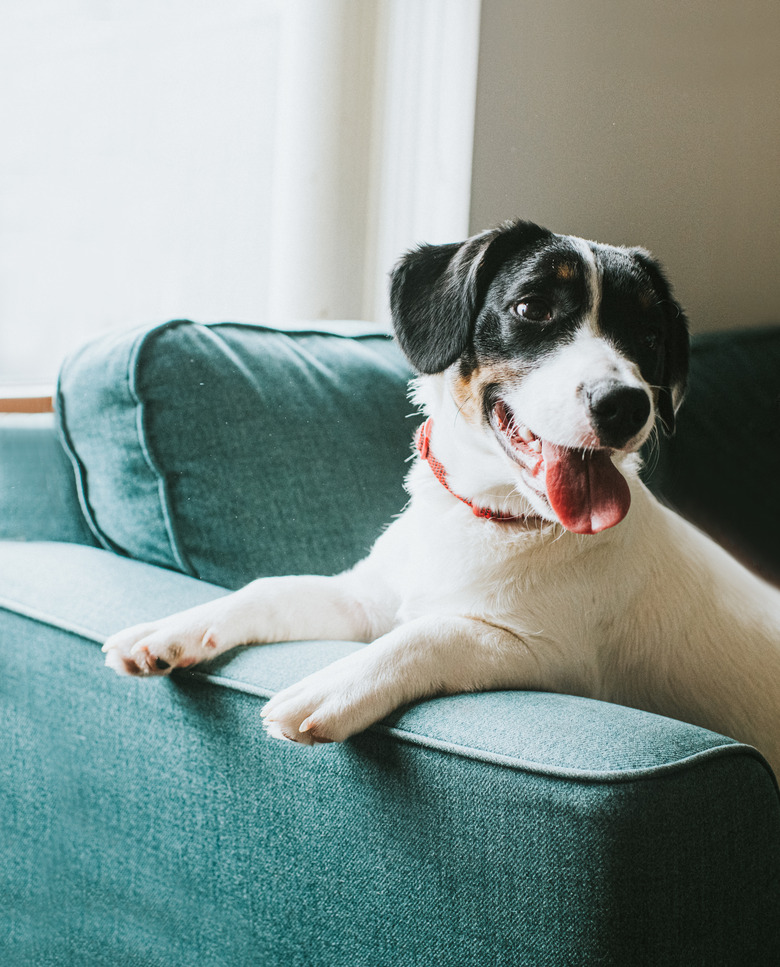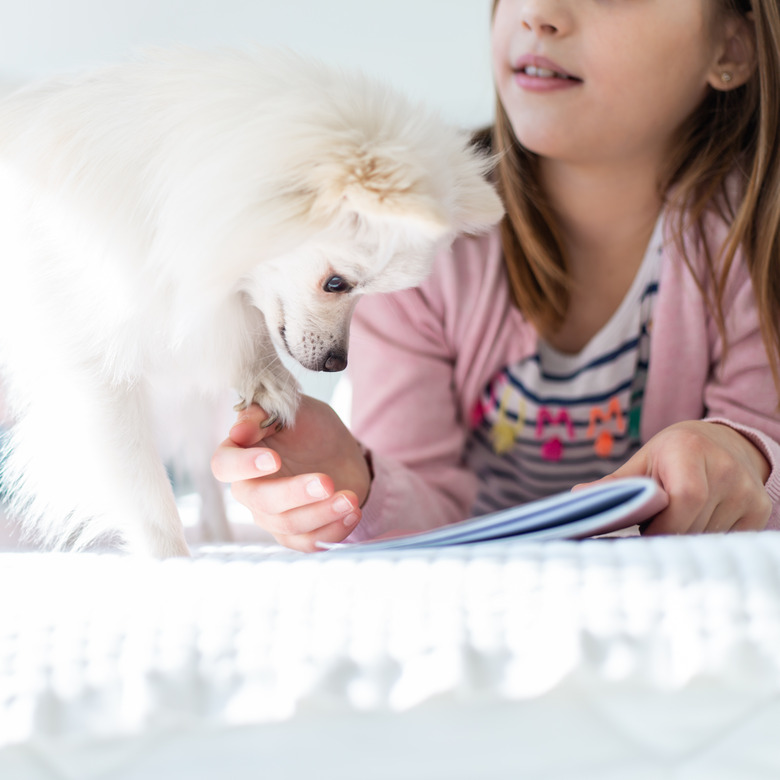What "Type" Of Dog Should I Get If I Have Kids?
Let's start by saying that a dog's breed is not a reliable indicator of whether the dog will be "good" or "bad" with children. A lot of this type of sentiment comes from misinformation, both online and elsewhere, born of confirmation bias or a bad experience, etc.
Any breed of dog can be perfectly fine to have in a household with a child or multiple children because it really comes down to the dog's temperament, personality, and history. It's also always a good idea to prepare children for dealing with a dog (whether it's a puppy or an adult). Consider hiring a qualified trainer to do some training with the whole family once you get a dog. This will make the entire experience easier on everyone, including the new dog!
Dogs and children statistics
Dogs and children statistics
According to a 2001 report by the CDC (one of the most recent reports on non-fatal dog bites by the CDC), approximately 154, 625, or 42 percent of dog bites occurred among children under 14 years of age that year, with the rate "significantly higher" for boys than for girls.
The report is an interesting look at a pattern. Children aged 5-9 years reported the highest number of injuries. As you can see, young children are often the victims of dog bites, and there are quite a few reasons for this. Children, particularly younger ones, are more likely to be too aggressively playful with dogs. They are more likely to chase the dog, grabs his ears or tail, pull at the dog, try to pick up the dog, etc. All of these acts are likely to aggravate a dog enough for them to bite a child.
It's important to remember that dogs may be domesticated family pets, but they are still animals. They are not toys. They have feelings and can get scared, irritated, and angered too. It is also important to understand that children can see dogs as playthings without realizing that they are living things who need to be respected.
We can't expect children and dogs to understand how to behave around one another, but we can teach them both behavioral techniques to prevent injury. Most dog aggression toward children is fear-based; however, dogs can also express territorial and possessive aggression. Small children also happen to be closer to the dog's level, making them more likely to get bitten on the head or face. Older children, meanwhile, might get bit more often on the extremities.
Dog personality traits
Dog personality traits
Studies have shown that there are five key dog personality types: "...Playfulness, Chase-proneness, Curiosity/Fearlessness, Sociability and Aggressiveness, and one higher-order, broader dimension, interpreted as a shyness–boldness continuum."
Fear is the most common cause of aggression, according to the American Kennel Club. Sometimes people fail to realize that their behavior is frightening to a dog. If a dog feels trapped in a given situation, they may attack in an attempt to protect themself. You might not see it coming, because you're not familiar with the signs. In some cases, the sign is body language that may not be immediately obvious to a person. For this and other reasons, it's a good idea to become acquainted with your dog's body language.
Various examples of human behavior can seem threatening to a dog, like leaning over to pet them on the head. You're being friendly, but the dog doesn't know that. Lack of socialization is another cause of fear and aggression. When planning to adopt a new dog or puppy, make sure you ask about socialization and how the dog typically behaves around people or other dogs. Ask about any instances of aggressive behavior, like growling, snapping, and biting. Also ask about general temperament, or how the dog behaved during any encounters with children. In some cases, a dog may become more aggressive with age, especially if opportunities for socialization decrease throughout his lifetime. Studies have also shown that many times the causes of a bite come from "known provoking behaviors." Education of dog owners, parents, and children on avoidance of these provoking behaviors is paramount in preventing dog bite-related injuries.
A bit of good news is that dogs tend to become less active as they age, but they remain "obedient" and social, according to a study on dog personalities published in Scientific Reports in 2020. It's good to know that activity levels can get lower if you happen to have a very active puppy. If you get a puppy with a high energy level, make sure you set aside some time for playtime and daily exercise to help give the dog an outlet for all that energy.
How to prepare a dog for encounters with children
How to prepare a dog for encounters with children
During their socialization period (6 to 14 weeks of age), puppies are extremely impressionable. If puppies have positive encounters with children of varying ages, but especially young ones, during this period, chances are higher that they will grow to be comfortable around children. You can even try to desensitize your dog to being touched on the head and face, or even gently tugged, so that when they encounter children they won't be shocked or unpleasantly startled by their actions.
After 14 weeks of age, puppies become more fearful or apprehensive in general. If you avoid negative experiences with children during this time, you can help ensure that your dog does not become fearful of them. Punishing a dog in any way won't help to put them at ease around children either. Furthermore, avoid doing things with your dog (like rough housing) that you wouldn't want children to do with them.
Other things to consider:
- Don't leave any dog alone with young children or infants.
- Always have an adult there to supervise interactions with children and dogs.
- Remove the dog from the situation right away if it shows signs of nervousness or stress.
- Use verbal commands like sit, down, come during the encounter, and allow children to use the commands if the interaction is proceeding in a positive manner.
- Begin dog training early and involve the children, if they're not too young.
- Address signs of aggression immediately with a professional.
The bottom line
The bottom line
Dogs have different personalities, just like humans. Some may be predisposed to aggression, but it's not a reflection of the breed. Other factors, like lack of socialization, can usually be the cause of an aggressive personality type. It's so important to begin training early and teach children (and adults!) to avoid known provoking behaviors, like tugging, pulling, making noise, touching the head or face, pulling on the ears or tail, etc.



